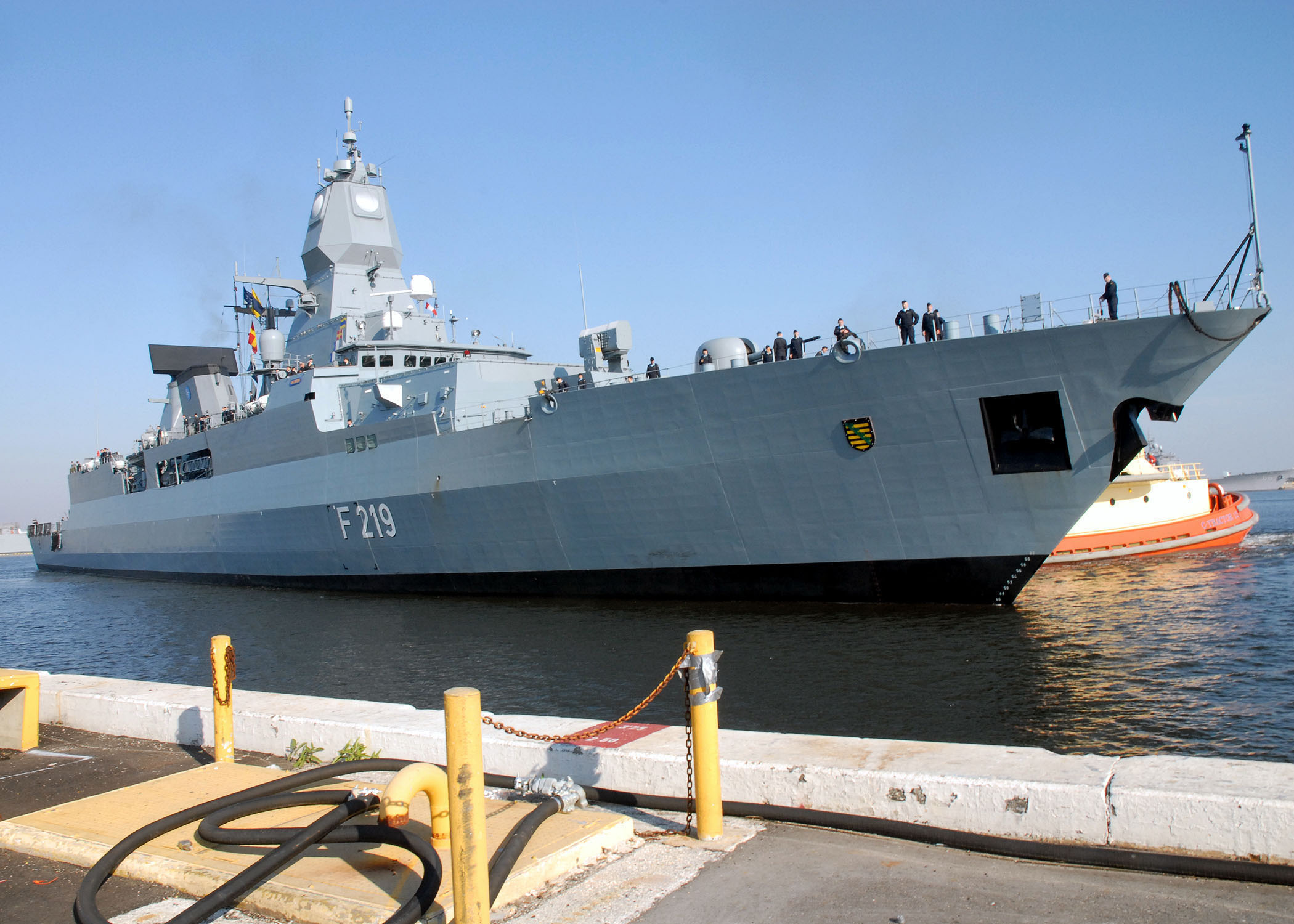
frigates of the Bundesmarine
Former British ships as training frigates of the Bundesmarine "traveled a bit of the world." Pictured is Graf Spee in Vancouver in 1963. For Walter E. Frost/City of Vancouver Archives
The Bundesmarine very soon after its uprising reached the optimum level of saturation with ships of the most important classes. Although it was difficult to increase this potential quantitatively in subsequent years, every effort was made to maintain a high level, at least qualitatively, at all times.
There were several reasons for the significant expansion of the Bundesmarine. First, in general, Germany was one of the largest countries in Europe at that time, and the industrial base, quickly restored after the war - thanks to American financial assistance - provided the basis for the development of a strong army. At the same time, the strategic location on two seas and the role of a kind of gate in the Danish Straits required the maintenance of an appropriate maritime potential of the branch of the armed forces.
Strategic presence here and there
The role of the FRG was decisive in the doctrine of a possible stop of the troops of the USSR and the European socialist states in the west of Europe. Due to the strategic position, the front of a possible war between the two opposing blocs of states had to pass through the German lands. Hence the need for a significant quantitative development of ground and air forces, additionally supplied by the occupying forces, of course, mainly American. On the other hand, the presence of coastlines on the Baltic and North Seas and control of strategic shipping lanes connecting both waters (the Kiel Canal and the Danish Straits) required a corresponding expansion of the fleet, adapted to the planned activity both in closed and open seas. ocean water.
And it was the Bundesmarine, with the support of the fleets of smaller countries (Denmark, Norway, the Netherlands and Belgium), on the one hand, that had to block the forces of the Warsaw Pact in the Baltic Sea, and at the same time be ready to protect Atlantic shipping. This required a uniform deployment of escort, light attack, anti-mine and submarine forces. So the first official plan for the development of the naval forces of the Bundesmarine was "cut out". Let us only recall that the extremely ambitious expansion plan, developed in 1955, provided for the commissioning of, among other things: 16 destroyers, 10 supervisors (later called frigates), 40 torpedo boats, 12 submarines, 2 minesweepers, 24 minesweepers, 30 boats.
It was assumed that it would be built by its own shipbuilding industry. As you can see, the plan was well balanced, establishing an even expansion of all the most needed classes of warships. However, until the first draft of the parts materialized, it was necessary to temporarily use the Kriegsmarine that was available and still remembering the war, or take the "used" ships offered by the NATO allies.
Of course, closing the Danish Straits with small ships was much easier than capturing and keeping more destroyers or frigates in service. In solving the first task, the fleets of smaller countries, primarily Denmark and Norway, helped to expand their own groups of torpedo boats and minesweepers.
In 1965, the Bundesmarine had 40 torpedo boats, 3 minelayers and 65 base and minesweepers. Norway could deploy 26 torpedo boats, 5 minelayers and 10 minesweepers, while Denmark could deploy 16 torpedo boats, 8 old minelayers and 25 anti-mine boats of various sizes (but mostly built in the 40s). It was much worse with much more expensive destroyers and frigates. Both Denmark and Norway were building their first post-war frigates at the time (2 and 5 ships respectively). That is why it was so important not only for Germany, but also for NATO as a whole, that the Bundesmarine had a sufficiently developed escort group.
Ships of former enemies
In 1957, in parallel with negotiations with the Americans about destroyers, the leadership of the German Ministry of Defense was negotiating the acceptance of used ships also from the British. Negotiations on this matter began as early as the end of 1955. Throughout 1956, details were recorded, including the establishment of sales prices. Already in May, the names of the units selected for transmission were known. The British had to pay dearly for the surrendered 3 escort destroyers and 4 frigates, which, after all, were only mothballed military construction units. And so for the corps themselves they asked for 670. 1,575 million pounds sterling for the cost of maintenance and necessary repairs and another 1,05 million pounds sterling for their weapons and equipment, which gave a total of 3,290 million pounds sterling, or almost 40 million West German marks while.
